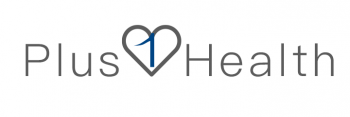If there is nighttime snoring, irregular snoring and unexplained dry mouth in the morning, daytime sleepiness, fatigue and other symptoms, it should be highly suspected of sleep-disordered breathing. The main symptom of sleep-disordered breathing is nocturnal snoring. In the process of snoring, some patients have uneven snoring, with interruptions in the middle and even repeated awakenings. Patients with mild sleep-disordered breathing have no significant specific symptoms during the day. Patients with severe disease may have symptoms such as daytime drowsiness, morning headache, impatience, fatigue, decreased work efficiency, inability to relieve fatigue after sleep, dry mouth, increased nocturia, acid regurgitation and other symptoms, and are prone to complications such as hypertension, coronary heart disease, cerebrovascular disease, etc.
The etiology of sleep-disordered breathing is complex and may be derived from genetics, aging, living habits and environmental factors. In addition, obesity, nasal obstruction, pharyngeal stenosis, abnormal neuro-muscular tone regulation can all cause disease. Common causes of airway stenosis include adenoid hypertrophy, tonsil hypertrophy, micromandibular, nasal polyps and deviated nasal septum. Because the facial structure of the yellow race is different from that of the white race, some people who are not obese can also get the disease. In addition, factors such as the regulation function of the central nervous system on breathing and the regulation of airway muscle tension during sleep can also cause disease.
By changing living habits and environmental factors, the occurrence and development of sleep-disordered breathing can be prevented to a certain extent. Weight control starts with weight loss, which reduces the risk of developing sleep-disordered breathing. At the same time, establishing the habit of sleeping in the lateral position is helpful for preventing and reducing obstructive sleep apnea hypopnea syndrome (commonly known as snoring). If the symptoms are severe, and the above measures alone cannot effectively control the symptoms, you should go to a professional medical institution for diagnosis and treatment. It should be emphasized that children who snoring need to seek medical attention in time, because childhood is a critical period for craniofacial development. If snoring and mouth breathing at this time, the craniofacial skeleton often develops into a craniofacial shape that is prone to snoring. It is easy to develop sleep-disordered breathing in adults. Correction of many structures often requires more invasive surgery and higher risk if treated in adulthood.
Sleep breathing monitoring is the most important test for diagnosing sleep-disordered breathing. If your doctor thinks sleep apnea monitoring is necessary, they will order the appropriate tests. Through sleep monitoring, it is possible to distinguish whether the symptoms of nighttime sleep arousal and daytime sleepiness are caused by snoring or other sleep disorders. In conclusion, sleep monitoring can provide a lot of information to help analyze and diagnose various sleep-related diseases, which is also the currently recognized gold indicator for the diagnosis of sleep apnea-hypopnea syndrome. Through sleep apnea monitoring, combined with the clinical symptoms of patients, most patients can be diagnosed. A few special sleep disorders may require further examination to be diagnosed.
We have a sleep recorder that can be used for sleep monitoring, real-time monitoring of heart rate, breathing rate, body movement, turning over, getting out of bed, etc. It is equipped with the “TiNew” applet, which can issue sleep records and reports, and have remote viewing. , early warning and other functions, it can also do early screening of sleep apnea to prevent disease risks.
